4.Andrew Newman - Irrigation New Zealand
advertisement
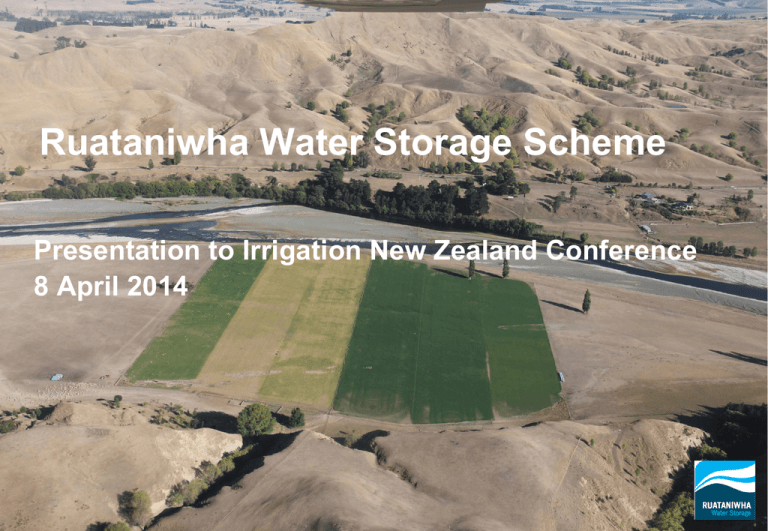
Ruataniwha Water Storage Scheme Presentation to Irrigation New Zealand Conference 8 April 2014 Presentation outline 1. Freshwater in Hawke’s Bay 2. Tukituki catchment issues & the Ruataniwha Water Storage Scheme 3. RWSS business model – A few basic stats 4. Delivering the proposition – Regulatory security – Design & construct procurement and the infrastructure offer – Water access & uptake – Finance & structuring 5. Summary – Scheme development approach – Hurdles, risks, challenges & opportunities Hawke’s Bay Catchments The Water Challenge Hawke’s Bay has plenty of water • Hence extensive flood protection infrastructure assets But is summer dry • Has significant seasonal limits when the water is most needed and has highest value • Long-term drying trend • Very low river flows in typical summers • Poorer water quality in lowland areas in part coupled with the low flows issue, part urban Has traditionally dealt with not enough water solely through a regulatory approach • Traditional planning instruments on their own lack flexibility when dealing with change (average 8 years) Freshwater in Hawke’s Bay, June 2013 Onga Onga - Average Daily Soil Moisture 60 50 Soil Moisture (%) 40 30 2007-08 20 2008-09 2009-10 2010-11 2011-12 10 2012-13 Field capacity 0 1 July 1 August 1 September 1 October 1 November 1 December 1 January Month 1 February 1 March 1 April 1 May 1 June Water Management in Tukituki Catchment 1 = problem action & inaction 2 = storage pre-feasibility 3 = full feasibility 4 = full scheme operational assessment & final business case Following 3 years of feasibility studies, examination of 20+ sites for water storage options (large and small), and extensive stakeholder consultation, the team is on track for determining final financial viability by June 2014 Environmental benefits • Direct environmental benefits = o flushing flows for removing algae o increased river flows from irrigation return flows • Offsetting the economic cost of Tukituki plan change = o the Plan change will improve the river environment through lifting minimum flows, setting regulatory limits for nutrients o the RWSS can mitigate the economic impacts as an alternative source of water • Estimated value $50 to $80 million Economic Benefits to Hawke's Bay Region from the RWSS Scheme Governance The below comprehensive current and future governance structure will ensure a robust investment recommendation is made, and contractual frameworks will protect end users against inherent natural monopoly market power Scheme Sponsorship Governed by: 5 Independent Directors Dedicated RWS sub-committee • Agribusiness • Water strategy • PPP/SPV Commercial Lawyer • Large Civil Works Engineer • Cultural & Mana Whenua Advisor Operational Assessment Scheme delivery • CEO and RWSS Internal team with assistance from: Infrastructure Financing Experts Large Dam Enginering Advisor Legal (PPP, Securities Law) Resource Consent / EPA Advisory Scheme Model • Water supply business that supplies water to users on volumetric charge basis Farmer do not have to be, but can be, investors • Business owns and operates storage and distribution infrastructure – supplies water to farm gate • Modified BOOT-like model, with SPV operating business for defined concession period (70 years) • Assets revert to HBRC (or its successor) for nil compensation at end of concession period (Iwi & local investors rights carry through) • Concession deed with HBRC controls many public good aspects of project • Water users have long term, take or pay, contracts, but some water available for spot market Proposed infrastructure • One large dam 83m high • Distribution network for approx 26,000 ha • River corridors offer alternative distribution • Approx 80,000 ha in catchment irrigable based on slope class 0 – 7 degrees • Depending on land use and consumption very high reliability water for up to 30,000 ha. Delivering the proposition Parallel Work Streams Environmental, Social, Technical & Economic Feasibility Established October 2012 Structuring Financing Uptake Design & Construction Consenting Contractual & Financial Close Target June 2014 Consenting – 6 May (EPA lodged) to April 15 2014 - Draft Decision Final Decision 28 May • Resource consent application for the Ruataniwha Water Storage Scheme and Tukituki River Catchment Resource Management Plan Change lodged by way of a joint EPA process (6 May) • The Plan Change will increase minimum flows and set water quality standards to promote efficient water usage and environmental sustainability • The Plan Change will increase minimum flows and set water quality standards to promote efficient water usage and environmental sustainability D&C Procurement – Feb 2013 (EOI) to Mid 2014 (ready to construct) Design and construction for the Scheme is being procured through a competitive global process February 2013 EOI March 2013 Short List Strong local & global interest - Boygues & OHL/Hawkins selected 5 fully formed responses: - Significant experience constructing dams in seismic areas Design Phase Fully costed design 1 - Innovative approach to optimise D&C outcome - Local involvement promoted through HB subcontractors November 2013 Select Preferred Select preferred D&C provider based on two fully costed bid designs: Fixed - time Fully costed design 2 Fixed - price Design compliant - Underwriting by two of world’s largest constructors mitigates completion risk Negotiation December-Feb 13/14 Refinement Scheduling Documentation Mid 2014 Financial Close D&C offer Storage • Central Core Rockfill Dam 83 m high • Static storage approx 98 Million m3 • 6.5 megs hydro Distribution • Primary distribution 16 kms canal, 17 km pipe • Secondary distribution approx 200 km pipe • Pressure = 35 m head across pipe network Further optimisation • Run of river takes Tukituki mainstem • Ground water swaps? • Hydro Uptake – April 2013 2012 (EOIs released) to Ongoing Engagement with farmer stakeholder group to establish earlybird incentive framework December 2012 Engage with farmer advisor network Release farm budgets to farmers March - April 2013 April 2013 April 2013 to November 2013 November 2013 to Feb 14 February 2014 to Mid 2014 On farm field days (Dairy, Arable, Sheep+Beef) Commercial Manager Appointed Sign Expressions of Interest with Potential Water Users Preparation of Preliminary Information Memorandum/Information Memorandum/ Water User Agreement 1. Release of Information memorandum for select capital raising amongst eligible investors including farmers 2. Convert EOIs to long term Water User Agreements Mid 2014: Target Contractual & Financial Close Water Access & Uptake • We currently hold 110 EOI’s, for 44 Mm3 water or 13,000+ hectares • 47% of the water under EOI, would equate to 27,500 ha on current metres cube per ha • Aiming to contract 40 Mm3 water at financial close • Contractual elements: Water Price – 23 c take of pay + 3 cents for pressure 35 year contract CPI inflator with reset mechanism Farm environmental management plan • Opportunity for investment via Information Memorandum for eligible investors (Irrigators/ Hawke’s Bay Investors) Summary and Recap Scheme development approach 1. Ensure the scheme is part of an overall catchment water strategy 2. Seek to create regulatory security 3. Seek to manage demand and construction risk through a public private sector alliance 4. Aim to complete final go no go proposition inside 5 years 5. Take a systematic approach – pre feasibility, feasibility and final business case. 6. To achieve these timeframes – run work-streams in parallel & resource adequately Hurdles/risks/challenges/opportunities 1. Workable consent – April – go – no go > We’ve lost 3 months in our critical path in this work-stream 2. Securing committed revenue from farmers mid year – go - no go 3. Aligning compatible investors and settling the capital structure mid year – go – no go > the final capital structure will fold in behind revenue 4. Keeping the build process & critical path aligned 5. RWSS may create new ground for rural water infrastructure in its approach to > consenting > procurement > capital structure > Bulk water supply business model Biggest current risk/opportunity = time and momentum
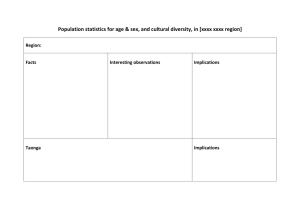

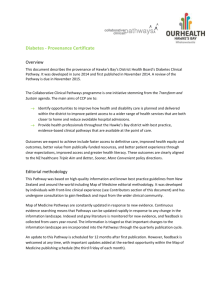
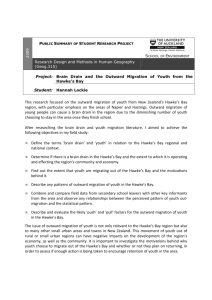
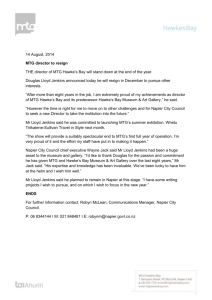
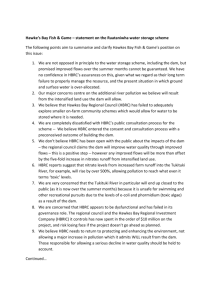



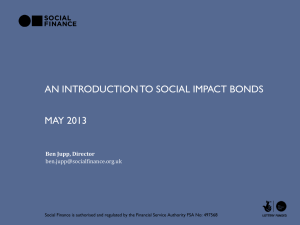
![[Company Name] Certificate of Completion](http://s2.studylib.net/store/data/005402466_1-8a11f4ced01fd5876feee99f8d8e6494-300x300.png)
